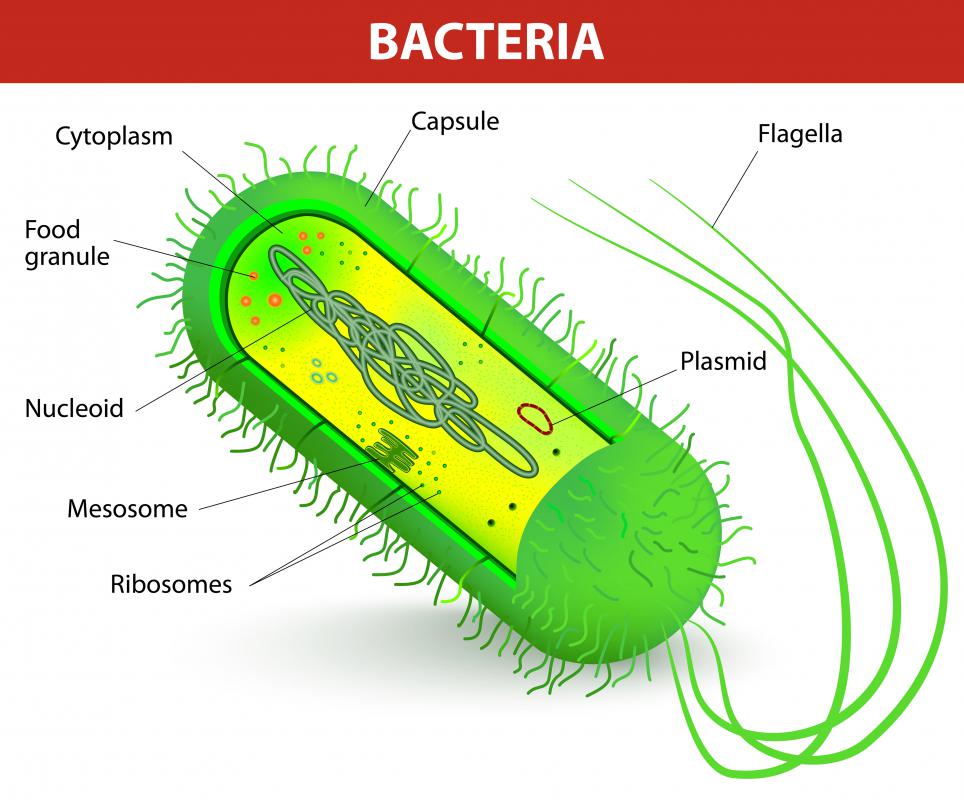At WiseGEEK, we're committed to delivering accurate, trustworthy information. Our expert-authored content is rigorously fact-checked and sourced from credible authorities. Discover how we uphold the highest standards in providing you with reliable knowledge.
What Is a Bacterial Biofilm?
Biofilms are one type of bacterial community. Instead of growing as single cells that are not attached to each other, certain bacterial species can form biofilms and grow as one sheet covering a surface. A bacterial biofilm is held together through a sticky substance the bacteria produce. This structure offers protection to the bacteria from disinfectants or from antibiotics and so is of major interest to medicine and industry.
Bacteria can live alone, but living in a group can confer certain benefits. Species such as those in the Klebsiella and Pseudomonas genera of bacteria are examples of the kinds that can live together in a bacterial biofilm. The surfaces that biofilms call home can be inanimate or even biological. For example, Pseudomonas aeruginosa can live on the inner surfaces of the lungs and potentially cause disease, or it can live on surfaces like the inside of production machinery in a factory. Any surface that has a good supply of moisture and nutrients can support a bacterial biofilm.

Most often, a bacterial biofilm contains more than one species of bacteria. It can also be home to other microbes like fungi or algae. A clean surface can quickly become covered in organic molecules from the surrounding environment. The first bacteria to colonize the surface stick by attaching to the organic layer. The biofilm structure, when it develops, is held together by a glue-like substance made from sugars that the bacteria themselves produce, which is hard to dislodge through cleaning.

Bacterial biofilm toughness allows bacteria to remain living in areas where, otherwise, they would be removed through mechanical action, liquid flow, or biological action. The surface of the teeth are one example of an area where bacterial biofilms live, giving a home to microbes that feed off the nutrients present in the mouth. Flowing rivers can move free bacteria downriver and out to sea, but if the bacterium manages to find a foothold on the rocks in the river, then it can sit there and thrive as part of a biofilm.

Medical examples of biofilms include recurring ear infections, where the bacteria causing the illness live inside the ear. Legionnaire's Disease, which is a potentially deadly lung infection, arises from Legionella bacteria inside hot water aerosol sources becoming loose from their primary biofilms and making their way inside the lungs. Even the medical devices that are necessary for some hospitalized patients, like intravenous tubes or catheters, can harbor biofilms.

If biofilms were not advantageous to microbes, then the microbes would not form them. Apart from being able to stay in an environment filled with nutrients, like a flowing river, bacterial biofilms are protective against antibiotics and disinfectants. More biofilm bacteria survive the presence of otherwise deadly chemicals than free-floating bacteria. This characteristic of biofilms make bacteria that choose this manner of living harder to kill in cases like fighting infections or keeping surfaces clean.
AS FEATURED ON:
AS FEATURED ON:














Discuss this Article
Post your comments